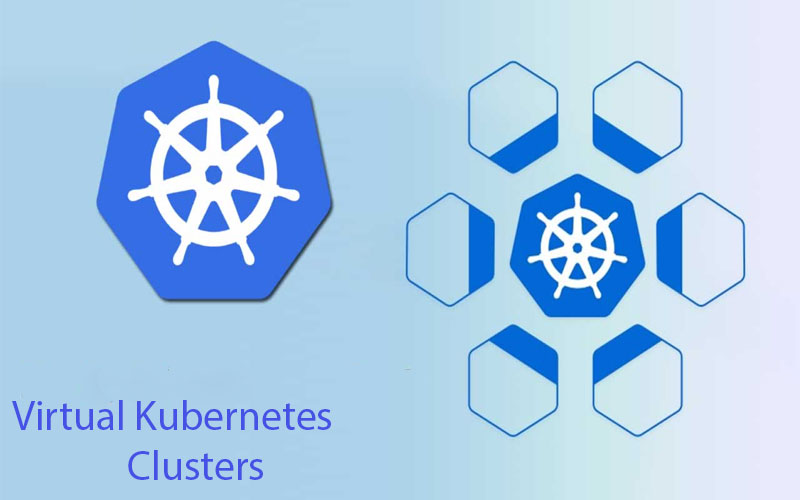For enterprises operating large Kubernetes clusters, implementing true multi-tenancy has long been a challenge. Traditional options like namespaces provide only lightweight isolation – not enough for securely compartmentalizing teams and workloads sharing infrastructure. But an innovative approach called virtual clusters now unlocks robust, secure multi-tenancy for Kubernetes.
What Are Virtual Kubernetes Clusters?
A virtual cluster essentially creates a self-contained Kubernetes distribution inside a namespace within the physical cluster. This virtual cluster gets its own control plane and APIs as if it were a separate cluster. The virtual cluster operates independently, with its policies and controls over the resources allocated to it.
Teams can deploy to their virtual cluster just as they would a regular cluster. Their objects remain securely isolated at the virtual cluster level. This prevents issues like one team’s custom controllers or admission webhooks impacting other teams’ workloads.
The Key Benefits of Virtual Clusters
Lightning Fast Deployment
Spinning up a new virtual cluster takes seconds compared to the minutes (or hours) it takes to set up a new physical cluster. This speed enables use cases like creating on-demand dev/test environments and disaster recovery clusters.
Stronger Default Security
Virtual clusters provide stronger isolation than namespaces. Network policies restrict external traffic by default, resource quotas prevent noisy neighbors, and RBAC scopes objects to the virtual cluster. This reduces blast radius and hardens security posture.
Cost and Resource Optimization
Consolidating multiple team clusters onto a single host cluster allows better sharing of spare capacity. Virtual Kubernetes clusters also eliminate much of the heavy overhead of managing separate dedicated infrastructure.
Simplified Multi-Tenancy
Virtual clusters create tidy separations between teams and projects, with built-in guardrails. Compared to namespaces, they require less manual security configuration and reduce namespace sprawl.
How Do Virtual Clusters Work?
Under the hood, a virtual cluster runs a stripped-down Kubernetes control plane inside a namespace on the physical cluster. This handles API requests and data storage for the virtual cluster. The kubelet and network proxy components on each node integrate the virtual cluster’s pods into the host cluster infrastructure.
But within the virtual cluster, it looks and feels like users have a dedicated cluster with its own API server endpoint. They access the virtual control plane API just as if it were a separate cluster.
The virtual cluster operator automatically handles isolating the virtual control plane from the physical cluster while securely connecting to the shared infrastructure.
Launching a Multi-Tenant Environment with Virtual Clusters
To get started with virtual Kubernetes clusters, you first need a way to create and manage them. The open-source Cluster API project provides APIs for this using Custom Resource Definitions (CRDs). Vendors like Uffizzi have packaged Cluster API for virtual clusters into easy-to-use SaaS platforms.
Once the virtual cluster operator is deployed, creating a new virtual cluster takes defining a custom resource object that specifies configurations like the Kubernetes version and resources allowed. In seconds, it spins up a fully functioning control plane in the namespace.
Virtual Clusters Unlock the Future of Multi-Tenant Kubernetes
For organizations running large, shared Kubernetes platforms, virtual Kubernetes clusters represent a groundbreaking leap for multi-tenancy. They enable fine-grained isolation and customization without the sprawl and overhead of separate dedicated clusters. With virtual clusters, teams get greater autonomy over their environments with a reinforced security posture.











